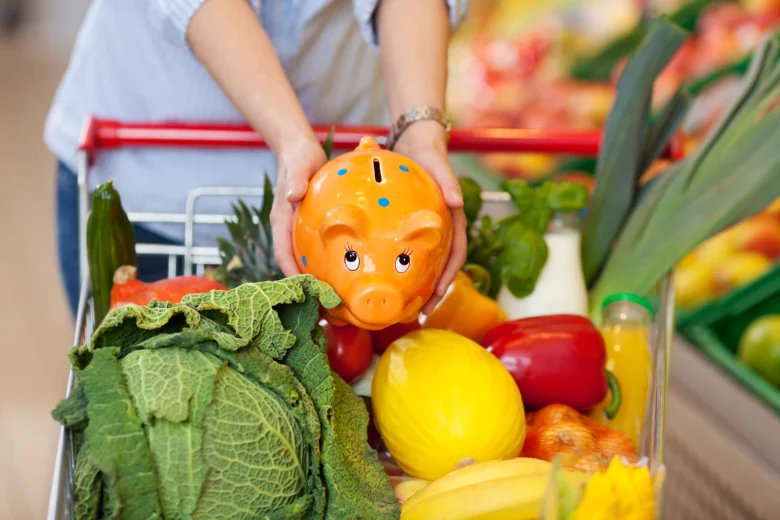Shopping for food can be costly. Luckily, there are smart grocery shopping techniques that can help you save money while purchasing quality ingredients. Start by shopping the outer aisles of the store for fresh produce, dairy, and lean proteins in smaller quantities to avoid overspending and reduce waste.
1. Plan Your Meals Ahead of Time
Making a meal plan and grocery list may not be everyone’s top priority, but doing it can save money in the long run. Purchasing only the ingredients you need and will consume before they spoil, along with taking advantage of sales and coupons, will help you save both time and money in the future.
Ensure you have a copy of your grocery list with you during your shopping to ensure nothing is overlooked. Write down quantities so you don’t overbuy, and be wary of marketing gimmicks (like “10 for $10” and 3-for-5 deals), which don’t always save money. Compare prices at several different stores before finding the best price offers.
2. Buy on Sale
One of the easiest ways to save money when grocery shopping is by purchasing items when they are on sale. Check weekly grocery circulars and online ads to find these offers, from fresh fruit to canned goods. Compare prices between different grocery stores to determine where you can find better value. Lastly, join a bulk club to take advantage of purchasing large amounts at once and reap savings!
As another cost-cutting measure, instead of purchasing pre-cut vegetables or shredded cheese, opt for cost-efficient options like whole vegetables and block cheese that provide equal convenience but at much reduced costs. They taste just as excellent!
3. Shop Seasonally
Shopping seasonally is the most effective way to reduce food waste. Seasonal foods tend to be both cheaper and tastier than items purchased outside their season. Adherence to your grocery list can help prevent impulse buys that add unplanned expenses and save money by decreasing perishable food waste.
Produce and other perishables should be purchased near the perimeter of a store, where the freshest items are located, while interior aisles offer frozen and other non-perishables. It’s also wise to inquire about store brand versions, which often look identical but cost much less.
4. Limit Convenience Foods
Buying prepackaged or convenience foods can save time in the kitchen, but their high price tags make them less desirable. When possible, opt for whole foods and ingredients you can prepare yourself instead.
An effective way to save money when purchasing groceries is reducing food waste. You can do this by planning meals that use ingredients efficiently, storing perishable items appropriately, and using leftovers in new recipes. If you shop frequently at grocery stores, consider signing up for a store loyalty or reward program. Many such programs provide members-only discounts and electronic coupons.
5. Bring Your Own Bags
Many grocery stores now sell reusable shopping bags at the cash register, and they tend to be quite reasonably priced. When possible, bring along your own reusable bag every time you shop to avoid incurring plastic bag fees.
Name-brand items tend to cost more, while supermarkets also carry store-brand items with similar taste but at reduced costs. When possible, opt for store brands whenever possible to lower your grocery bills and save. Reduce food waste by carefully planning meals using ingredients with multiple applications and storing perishables correctly so they last as long as possible. Doing this will save money and reduce food loss.
6. Use Rebate Apps
Rebate apps like Ibotta and Rakuten provide cash-back services that let users upload receipts and track offers, helping them save money on groceries. Their cashback services offer various offers that can be combined with loyalty programs, credit card rewards, and store coupons to create great savings opportunities for consumers.
Grocery stores now often offer digital coupons you can redeem in their apps or online—these coupons work similarly to paper coupons but are automatically deducted at checkout. Most grocery stores also offer loyalty programs with exclusive discounts that can be added to digital coupons or scanned at checkout, making a noticeable impactful difference to your grocery bill.
7. Shop Early in the Morning or Late in the Evening
Shopping can be an ordeal in busy stores. To save yourself the stress and make remembering everything on your list easier, consider going early or late in the evening for your grocery trip. By doing this, you will avoid crowds while easily remembering items on your list.
Be sure to have something to eat prior to starting your grocery shopping expedition; shopping on an empty stomach can lead to unintended purchases of high-fat or sugary food products. Avoid grocery shopping on Saturdays and Sundays to reduce stress. These days are notorious for being packed with shoppers rushing from work directly into stores in search of dinner ingredients.
8. Buy in Small Quantities
Grocery shopping can be an expensive undertaking, especially if impulse purchases make their way into your cart. But there are ways to reduce your grocery costs without compromising the quality or variety of meals; by planning ahead, purchasing in bulk, comparing prices, taking advantage of promotions and discounts, and shopping smart, you could save yourself some cash when grocery shopping.
Store-brand items tend to be significantly cheaper than name-brand ones and offer comparable quality. Plus, by shopping more frequently, you can avoid overstocking items and reduce waste due to spoilage; online or curbside pickup can eliminate impulse buys altogether and help minimize food waste.
9. Inquire About Store Discounts
Food stores will often mark down items nearing expiration, offering significant savings, particularly with meat items. Check this section regularly, as this could be your opportunity for big savings on these products.
Use store brands of items you consume regularly as another means to cut back costs, according to Woroch. This could include cans of goods, cereal, dry pasta, sugar, and baking staples.




